Despite critical advancements in the tech solutions available to conservationists worldwide, many existing tools are cost-prohibitive in the landscapes that need them most. Additionally, those who create low-cost and open-source alternatives to pricey market tech often operate on tight budgets themselves, meaning they need more resources to promote their solutions to a broader market. We need increased communication around these solutions to highlight their availability, share lessons learned in their creation, and avoid duplication of efforts.
This group is a place to share low-cost, open-source devices for conservation; describe how they are used, including what needs they are addressing and how they fit into the wider conservation tech market; identify the obstacles in advancing the capacity of these technologies; and to discuss the future of these solutions, particularly their sustainability and how best to collaborate moving forward. We welcome contributions from both makers and users, whether active or prospective.
Here is how we see the current OSS space and how this group plans to change it by supporting both makers and users:
Many users do not appreciate the significant benefits of open-source tech. This group will educate users about the advantages and the need for open-source tech, specifically in the context of ecology work. We achieve this by stimulating regular discussions on the forum and by encouraging and supporting users to use open-source tools wherever possible.
Building OSS can be difficult. We want to support both established and potential makers who wish to develop OSS. The OSS group is a place where makers can find funding opportunities, ask current and potential users questions, and share their technologies.
Using OSS can be difficult. We also want to support adopters of OSS tech. We do this by offering a place for users to share challenges they face and crowdsource advice on things like technology choice or technical support.
Makers may not have access to diversity of Users. The OSS group is a place that facilitates conversations between makers and users. This will give users a voice and ensure that makers are aware of the needs of users, enabling them to build better solutions.
The community is small and scattered. We want to grow an inclusive community of OSS practitioners. Our goal is to become the go-to place for discussions on the topic where people feel a sense of belonging.
Resources for getting started
- How do I use open source remote sensing data in Google Earth Engine? | Tech Tutors
- How do I use open source remote sensing data to monitor fishing? | Tech Tutors
- Low Cost, Open Source Solutions | Virtual Meetup
- What would an open source conservation technology toolkit look like? | Discussion
- December 2024 Open Source Solutions Community Call
Header image: Shawn F. McCracken
Group curators
- @Nycticebus_scientia
- | he/they
MammalWeb.org
Co-founded citizen science camera-trapping project with interest in developing 100% open source wildlife tech. Advocate for open science/open research. Former Community Councilor of the Gathering for Open Science Hardware.



- 4 Resources
- 25 Discussions
- 3 Groups
- @srankin
- | she/her
NOAA Fisheries
Bioacoustics researcher with the National Oceanographic and Atmospheric Administration (NOAA).

- 0 Resources
- 2 Discussions
- 16 Groups
- @briannajohns
- | she/they
Gathering for Open Science Hardware (GOSH)
Interested in the application of open source technologies for conservation research.



- 9 Resources
- 5 Discussions
- 4 Groups
No showcases have been added to this group yet.
- @himalyanibex
- | He/him
Tech Entrepreneur, ex-Microsoft, ex-Google, believe in technology for greater good, insatiable curiosity towards seeking knowledge & understanding covering disciplines like game theory, mechanism design, economics, ecology, agent-based modeling etc. Hands on with IoT, AI/ML etc.
- 0 Resources
- 2 Discussions
- 4 Groups
- @nancyalice
- | she/her
Design x Climate Action

- 0 Resources
- 0 Discussions
- 10 Groups
- @Arjun_Viswa
- | S
- 0 Resources
- 0 Discussions
- 26 Groups
3point.xyz
Over 35 years of experience in biodiversity conservation worldwide, largely focused on forests, rewilding and conservation technology. I run my own business assisting nonprofits and agencies in the conservation community



- 7 Resources
- 69 Discussions
- 12 Groups
- 0 Resources
- 0 Discussions
- 18 Groups
Field-based ecological engineer and naturalist with a special interest in data science and a strong passion for innovation in biodiversity monitoring.
- 0 Resources
- 2 Discussions
- 6 Groups
- @frides238
- | She/her
Hi! I am Frida Ruiz, with a bachelor's in Mechanical Engineering and very interested in habitat restoration & conservation. I am excited to connect with others and learn about technology applications within applied ecology & potential research opportunities

- 0 Resources
- 5 Discussions
- 13 Groups
- @amberbc
- | She/Her
The University of Western Australia & WA Department of Primary Industries and Regional Development (DPIRD)
WA Entomology PhD researching better ways to monitor for beneficials. GRDC Research Scholarship. DPIRD Study Leave.



- 7 Resources
- 17 Discussions
- 5 Groups
Open Source for Nature | Conservation focused Technologist

- 0 Resources
- 8 Discussions
- 7 Groups
Conservationist | Ecologist| Geospatial Scientist
- 0 Resources
- 1 Discussions
- 12 Groups
Movement ecologist using conservation technology to study the behaviors of animals in the wild to understand how they cope with change and most effectively address conservation- and conflict-related issues.


- 0 Resources
- 10 Discussions
- 11 Groups
Forester/ Ecologist with a Master’s Degree in the department of Range science - Wildlife and Fresh water fisheries.
- 0 Resources
- 0 Discussions
- 11 Groups
The Marine Innovation Lab for Leading-edge Oceanography develops hardware and software to expand the ocean observing network and for the sustainable management of natural resources. For Fall 2026, we are actively...
24 July 2025
Lead a growing non-profit to sustain open source solutions for open science!
19 July 2025
In this case, you’ll explore how the BoutScout project is improving avian behavioural research through deep learning—without relying on images or video. By combining dataloggers, open-source hardware, and a powerful...
24 June 2025
Weeds, by definition, are plants in the wrong place but Weed-AI is helping put weed image data in the right place. Weed-AI is an open source, searchable, weeds image data platform designed to facilitate the research and...
7 May 2025
Bringing you the latest in open-source technology for agriculture. This accompanies the Open Source Agriculture respository: Collating all open-source datasets, software tools and deployment platforms related to open-...
1 May 2025
Repository for all things open-source in agricultural technology (agritech) development by Guy Coleman. This accompanies the OpenSourceAg newsletter. Aiming to collate all open-source datasets and projects in agtech...
1 May 2025
Fires in Serengeti and Masai Mara National Parks have burned massive areas this year. With Google Earth Engine, it's possible to quantify burn severity using the normalized burn ratio function, then calculate the total...
29 April 2025
Conservation International is proud to announce the launch of the Nature Tech for Biodiversity Sector Map, developed in partnership with the Nature Tech Collective!
1 April 2025
Modern GIS is open technology, scalable, and interoperable. How do you implement it? [Header image: kepler.gl]
12 March 2025
Join the FathomNet Kaggle Competition to show us how you would develop a model that can accurately classify varying taxonomic ranks!
4 March 2025
Last month, we spent four days trekking through Cerro Hoya National Park in Panama, where we hiked from near sea level up to the cloud forest to deploy Mothboxes.
14 February 2025
September 2025
event
event
October 2025
event
November 2025
event
September 2024
event
| Description | Activity | Replies | Groups | Updated |
|---|---|---|---|---|
| Let’s take a look at the Trapper Infrastructure and the way how Trapper Keeper can empower users to efficiently manage, process, and share biodiversity data — even in low-resource... |
|
Camera Traps, Data Management & Mobilisation, Emerging Tech, Open Source Solutions, Software Development | 6 days 10 hours ago | |
| We're going to try it for a NatCap assessment this year, but no previous experience with it. |
|
Geospatial, Software Development, Climate Change, Funding and Finance, Marine Conservation, Open Source Solutions | 1 week ago | |
| want to join 2025 contest for humpback whale photos in Juneo Alaska of Kelp |
|
Citizen Science, Conservation Tech Training and Education, Drones, Emerging Tech, Geospatial, Human-Wildlife Coexistence, Marine Conservation, Open Source Solutions | 1 week 6 days ago | |
| This is awesome!! |
|
Conservation Tech Training and Education, Drones, Emerging Tech, Geospatial, Open Source Solutions | 2 weeks ago | |
| Kudos for such an innovative approach—integrating additional sensors with acoustic recorders is a brilliant step forward! I'm especially interested in how you tackle energy... |
|
Acoustics, AI for Conservation, Latin America Community, Open Source Solutions | 2 weeks 5 days ago | |
| Hi Chris Great to meet you — and I love that you called it convergent evolution! That’s exactly how it feels when two people independently reach a similar idea because the need... |
|
Open Source Solutions | 3 weeks 2 days ago | |
| Amazing. Thanks for pointing them out. Didn't see it. |
|
Open Source Solutions | 1 month 1 week ago | |
| Do you know a nonprofit or organization that is looking to work with students passionate about the environment? Code the Change... |
|
AI for Conservation, Citizen Science, Conservation Tech Training and Education, Open Source Solutions, Software Development | 1 month 3 weeks ago | |
| 15 years ago I had to rebuild the dams on a game reserve I was managing due to flood damage and neglect. How I wished there was an easier,... |
|
Drones, Conservation Tech Training and Education, Data Management & Mobilisation, Emerging Tech, Geospatial, Open Source Solutions | 4 months 1 week ago | |
| Thank you for your comment Chris! Using these tools has made a huge difference in the way we can monitor and manage Invasive Alien Vegetation. I hope you are able to integrate... |
|
AI for Conservation, Citizen Science, Conservation Tech Training and Education, Drones, Geospatial, Human-Wildlife Coexistence, Open Source Solutions | 2 months 1 week ago | |
| I would love to hear updates on this if you have a mailing list or list of intersted parties! |
|
AI for Conservation, Community Base, Drones, Latin America Community, Marine Conservation, Open Source Solutions, Software Development | 2 months 1 week ago | |
| Passing along a question from the Gathering for Open Science Hardware, asking about sources of funding to support in-person events... |
|
Open Source Solutions, Funding and Finance, Community Base | 2 months 2 weeks ago |
The Freshwater Sounds Archive
15 March 2024 10:32am
SMART Partnership Director
21 February 2024 4:32pm
Bio-Logging Science Symposium
9 February 2024 3:59pm
Passionate engineer offering funding and tech solutions pro-bono.
23 January 2024 12:06pm
2 February 2024 1:22pm
Hi Danilo. you seem very passionate about this initiative which is a good start.
It is an interesting coincidence that I am starting another project for the coral reefs in the Philipines which also requires water analytics so I can probably work on both projects at the same time.
Let's that have a call and discuss, will send you a pm with my contact details
There is a tech glitch and I don't get email notifications from here.
Monitoring setup in the forest based on the wifi with 2.4 GHz frequency.
30 December 2023 4:39pm
18 January 2024 8:17pm
Hi Dilip,
I do not have data about signal distortion in a forest area and with the signal you are intended to use.
However, in a savannah environment, when I put a tour on the highest point of the park, Lora signal (avg 900MHz) is less distorted than WiFi signal (2.4GHz). This is normal as a physics law: the frequency determines the wave length, and the less the length (obviously the less the frequency), the less obstructed the signal.
So, without interfering with your design, I would say that in a forest configuration, WiFi will need more access points deployed and may be more costly, and in your context, even when using LoRa, you will need more gateways than I have in a savannah.
To design the approximate number of gateways, you may need to use terrain Visibility analysis.
To design the cameras deployment, you will need to comply with the sampling methods defined in your research. However, if it is on for surveillance reasons, you may need to rely on terrain visibility analysis also.
Best regards.
22 January 2024 6:22pm
I've got quite a lot of experience with wireless in forested areas and over long(ish) ranges.
Using a wifi mesh is totally possible, and it will work. You will likely not get great range between units. You will likely need to have your mesh be fairly adaptable as conditions change.
Wireless and forests interact in somewhat unpredictable ways it turns out. Generally, wireless is attenuated by water in the line-of-sight between stations. From the Wifi perspective, a tree is just a lot of water up in the air. Denser forest = more water = worse communications. LoRa @ 900Mhz is less prone to this issue than Wifi @ 2.4Ghz and way less prone than Wifi @ 5Ghz. But LoRa is also fairly low data rate. Streaming video via LoRa is possible with a lot of work, but video streaming is not at all what LoRa was build to do, and it does it quite poorly at best.
The real issue I see here is to do with power levels. CCTV, audio streaming, etc are high data rate activities. You may need quite a lot of power to run these systems effectively both for the initial data collection and then for the communications.
If you are planning to run mains power to each of these units, you may be better off running an ethernet cable as well. Alternatively, you can run "power line" networking, which has remarkably good bandwidth and gets you back down to a single twisted pair for power and communications.
If you are planning to run off batteries and/or solar, you may need a somewhat large power system to support your application?
23 January 2024 1:19am
UniFi Outdoor WiFi Access Points - Ubiquiti
Deploy WiFi, anywhere. Incredibly versatile access points for extending WiFi over campuses, indoors and outside. Mesh-ready with long-range antenna integration.
I would recommend going with Ubiquity 2.4Ghz devices which have performed relatively well in dense foliage of the California Redwood forests. It took a lot of tweaking to find paths through the dense tree cover as mentioned in the previous posts.
How are Outdoor Fire Detection Systems Adapted for Small Forest Areas, Considering the Predominance of Indoor Fire Detectors?
8 January 2024 4:27pm
22 January 2024 6:35pm
Fire detection is a sort of broad idea. Usually people detect the products of fire, and most often this is smoke.
Many home fire detectors in the US use a radioactive source and measure the absorption of the radiation by the air. More smoke means more absorption.
For outdoor fire detection, PM2.5 can be a very good smoke proxy, and outdoor PM2.5 sensing is pretty accessible.
This one is very popular in my area.
Classic - Air Quality Monitor | AQI PM2.5 Indoor/Outdoor Sensor – PurpleAir
The PurpleAir Classic air quality monitor is the original and popular PurpleAir sensor. It measures real-time PM2.5 concentrations for residential, commercial, or industrial use and can be installed indoors or outdoors. Built-in WiFi enables the air quality measurement device to transmit data to the real-time PurpleAir AQI Map, which is stored and made available to any smart device. The PA-II is available in two editions. The SD edition includes an onboard SD logger to record and store data without a WiFi connection. Please note: This sensor does not come with a power adaptor. Find a suitable OUTDOOR-rated adaptor here or use your own USB power source (any 5V, 1.2 to 2.4 amp adaptor will work).
Open-source kinetic energy harvesting collar - Kinefox
1 November 2023 5:31pm
17 January 2024 7:45pm
This is super cool!
I was wondering if the development will further touch marine or aquatic animals, make it like water wheel (even might give burden to aerodynamic). Thank you for sharing!
Best,
Dhanu
20 January 2024 7:16am
Not a water wheel but equally cool.
20 January 2024 9:10pm
Super cool! thank you for sharing!
Presentation opportunity: Text analysis for conservation (NACCB 2024)
8 January 2024 4:05pm
Low-cost hydrophone - Invitation to tender
15 December 2023 9:28pm
PiCAM: A Raspberry Pi-based open-source, low-power camera system for monitoring plant phenology in Arctic environments
1 November 2023 5:34pm
Lead Data Engineer - Climate Solutions, Open Earth
25 October 2023 11:07am
Restoring the Mara Elephant Population Using Coexistence Tech Solutions with Mara Elephant Project's Wilson Sairowua
20 October 2023 1:31pm
27 May 2024 3:54pm
28 May 2024 8:12am
Unravelling freshwater turtle activity with an open source, low-cost accelerometer
6 October 2023 1:04pm
Experience with SeeedStudio T1000 as tracker and data logger.
4 September 2023 1:42pm
8 September 2023 4:37pm
ooh very cool Salman! Amazing how much tracking devices have come down in price over the years and LoRa/LoRawan is just such a perfect fit for GPS data. Thanks heaps for sharing.
All the best,
Rob
CIEEM 2023 Autumn Conference: Modernising Ecology: Techniques and Approaches
5 September 2023 1:59pm
Mobile App. Developer / Gibbon Research
24 August 2023 9:59am
Catch up with The Variety Hour: August 2023
14 August 2023 11:50am
Making Waves: Open Hardware as a Solution to Scaling up Bycatch Mitigation
9 July 2023 12:14pm
AI for Eagles Challenge
7 July 2023 10:03am
pneumatic artificial muscle applications in conservation tech?
5 July 2023 6:59pm
New Add-ons for Mbaza AI
4 July 2023 12:00pm
Catalog of open source conservation projects
30 June 2023 4:40pm
3 July 2023 2:53am
There is the Conservation Tech Directory! There's an 'open-source' tag you can search by too.
Making Waves: Open Hardware as a Solution to Scaling up Bycatch Mitigation
2 July 2023 11:24am
Sustained Effort: The Environmentalist’s Dilemma
21 June 2023 9:00am
PhD Position in Deep Learning for Biodiversity Monitoring: Custom Imaging Platform and Deep Learning to Classify and Phenotype Earthworms
21 June 2023 8:23am
Information Session: Technology Testing to Mitigate Human-Elephant Conflict in West Bengal
19 June 2023 11:07pm
Innovation wanted: Technology Testing to Mitigate Human-Elephant Conflict in West Bengal
19 June 2023 10:54pm
The Wildlife Society Conference
19 June 2023 5:59am


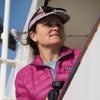














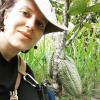
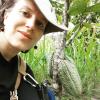






















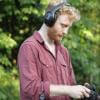







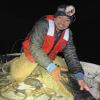

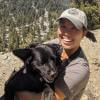








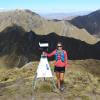





26 January 2024 3:18pm
Hi Krasi! Greetings from Brazil!
That's a cool journey you've started! Congratulations. And I felt like theSearchLife resonates with the work I'm involved round here. In a nutshell, I live at the heart of the largest remaining of Atlantic forest in the planet - one of the most biodiverse biomes that exist. The subregion where I live is named after and bathed by the "Rio Sagrado" (Sacred River), a magnificent water body with a very rich cultural significance to the region (it has served as a safe zone for fleeing slaves). Well, the river and the entire bioregion is currently under the threat of a truly devastating railroad project which, to say the least is planned to cut through over 100 water springs!
In face of that the local community (myself included) has been mobilizing to raise awareness of the issue and hopefully stop this madness (fueled by strong international forces). One of the ways we've been fighting this is through the seeking of the recognition of the sacred river as an entity of legal rights, who can manifest itself in court, against such threats. And to illustrate what this would look like, I've been developing this AI (LLM) powered avatar for the river, which could maybe serve as its human-relatable voice. An existing prototype of such avatar is available here. It has been fine-tuned with over 20 scientific papers on the Sacred River watershed.
And right now myself and other are mobilizing to manifest the conditions/resources to develop a next version of the avatar, which would include remote sensing capacities so the avatar is directly connected to the river and can possibly write full scientific reports on its physical properties (i.e. water quality) and the surrounding biodiversity. In fact, myself and 3 other members of the WildLabs community have just applied to the WildLabs Grant program in order to accomplish that. Hopefully the results are positive.
Finally, it's worth mentioning that our mobilization around providing an expression medium for the river has been multimodal, including the creation of a shortfilm based on theatrical mobilizations we did during a fest dedicated to the river and its surrounding more-than-human communities. You can check that out here:
Let's chat if any of that catches your interest!
Cheers!